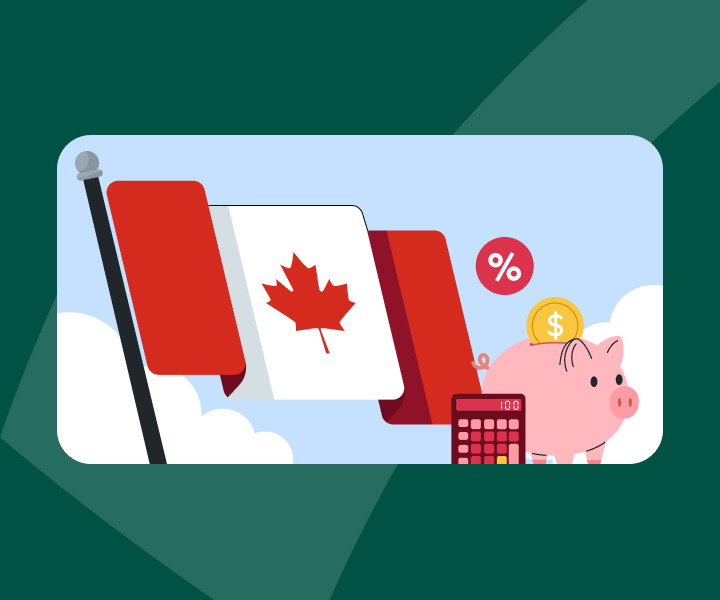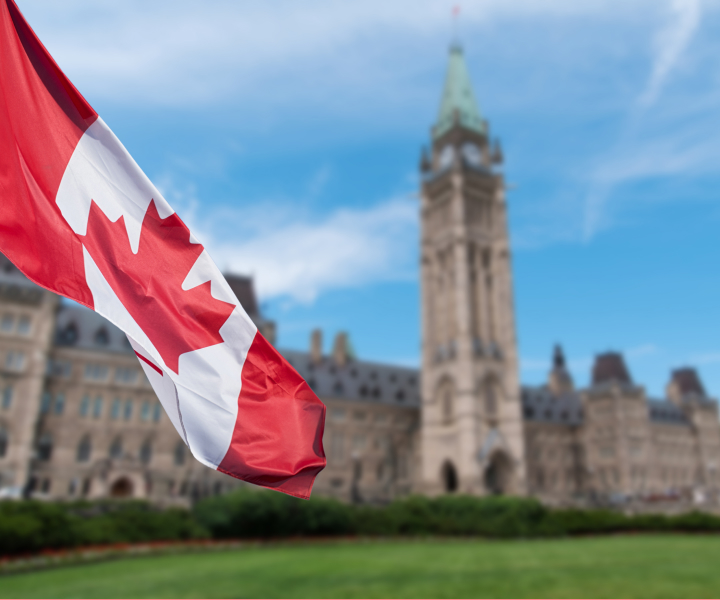What the New Middle-Class Tax Cut Will Mean for Canadians
TurboTax Canada
July 2, 2025 | 6 Min Read
Updated for tax year 2024

In a move aimed at easing the financial burden on working families, Prime Minister Mark Carney recently announced a proposed 1% reduction to the lowest federal personal income tax rate—dropping it from 15% to 14% as of July 1, 2025. Framed as a “middle-class tax cut,” the measure is expected to deliver meaningful relief to nearly 22 million Canadians at a time when the cost of living remains a top concern.
But what does this really mean for your paycheque, income tax, and financial planning in 2025 and beyond? Here’s what you need to know.
Key Takeaways
- Prime Minister Mark Carney’s proposed tax cut reduces the lowest federal personal income tax rate from 15% to 14%, potentially saving Canadians up to $420 annually by 2026.
- While the middle class stands to benefit most, lower-income earners may see reduced value in key non-refundable tax credits, such as the Basic Personal Amount (BPA).
- The federal government is also exploring a GST tax cut on new homes, aiming to ease housing costs for first-time buyers and tackle the rising cost of living.
Canada’s 2025 federal tax brackets and rates
Canada's personal income tax system is progressive, meaning you are taxed at the lowest rate until you move into the next income bracket, and then only that portion is taxed at a higher rate. For 2025, the proposed federal tax brackets are as follows:
| 2025 Federal Tax Bracket | Income Range | Current Rate | New Rate - July 2025 Onward |
| First bracket | Up to $57,375 | 15% | 14% |
| Second bracket | The portion of income over $57,375 up to $114,750 | 20.5% | 20.5% |
| Third bracket | The portion of income over $114,750 up to $177,882 | 26% | 26% |
| Fourth bracket | The portion of income over $177,882 up to $253,414 | 29% | 29% |
| Fifth bracket | The portion of income over $253,414 | 33% | 33% |
While some may assume only low-income Canadians benefit from the tax cut, in fact anyone paying tax benefits will be affected by the proposed change. The rate will remain at 15% from January to June and then drop to 14% from July to December, resulting in a blended rate of approximately 14.5% for the entire year in 2025.
How the tax cut changes your pay
Let’s say you’re earning $50,000 annually. Under the current rate of 15%, you pay $7,500 in federal tax on the first bracket.
Federal tax (current rate) = 0.15 × $50,000 = $7,500
Under the 2025 blended rate of approximately 14.5%, your federal tax would be:
Federal tax (blended rate) = 0.145 × $50,000 = $7,250
The tax cut would save you about $250 for 2025. Once the 14% rate applies for the full year in 2026, your savings would grow to $500.
Who benefits from this tax cut
According to government estimates, nearly 22 million Canadians will benefit from this tax cut. That includes individuals, couples, and families across various income brackets, particularly those hit hardest by inflation and cost-of-living pressures.
The term “middle class” isn’t clearly defined in Canadian tax policy. The Organization for Economic Co-operation and Development (OECD) defines the middle class as people earning between 75% and 200% of the median household income. Based on Statistics Canada data, a middle-class income ranges from about $52,875 to $141,000, since the median after-tax income per household is around $70,500.
Those earning below the taxable threshold or relying heavily on non-refundable tax credits will see minimal benefit, while high earners will only benefit from the reduced rate on the first $57,375 of income.
Potential disadvantages to watch for
While many Canadians will enjoy lower taxes under the new 14% personal income tax rate, there are some important trade-offs to consider, especially for low-income earners.
One key concern is the reduced value of non-refundable tax credits, such as the Basic Personal Amount (BPA), which is applied at the lowest federal tax rate. Since this rate is dropping from 15% to 14%, the tax savings these credits offer will also shrink. For example, the BPA currently allows you to earn a portion of your income tax-free, reducing your overall income tax owed. But when the credit is calculated at a lower rate, its impact on your income tax return is smaller.
Here’s a detailed sample calculation for both scenarios—before and after the tax cut—to show how the reduced Basic Personal Amount (BPA) will impact tax savings:
Scenario 1: Before the tax cut (federal rate at 15%)
- Basic Personal Amount (BPA) in 2025: $15,000
- Federal Tax Rate: 15%
Tax Savings from BPA:
= BPA × Federal Tax Rate
= $15,000 × 0.15
= $2,250 in tax savings
Scenario 2: After the tax cut (federal rate of 14%)
- Basic Personal Amount (BPA) in 2025: $15,000 (same amount)
- Federal Tax Rate: 14%
Tax Savings from BPA:
= BPA × Federal Tax Rate
= $15,000 × 0.14
= $2,100 in tax savings
Difference in tax savings: $2,250 – $2,100 = $150 less in tax savings due to the lower rate
When the federal tax rate drops from 15% to 14%, the value of the Basic Personal Amount credit decreases by $150 for someone claiming the full BPA. This means that although most people will pay less tax overall, the reduction in credit value slightly offsets the benefit, especially for lower-income earners who rely more heavily on these credits. The reduction in the value of credits could slightly reduce their refunds or increase the small amount of tax they owe, depending on their specific tax situation.
Additionally, because the incentive value of credits like the Canada Caregiver Credit, the disability tax credit , and other benefits, are tied to the lowest federal tax bracket, these too may be worth less starting in July 2025. For Canadians who rely on these credits to ease the financial burden of caregiving, aging, or health-related costs, this could come as an unwelcome surprise. Some of the common non-refundable tax credits that would be affected by the rate drop include:
- Basic Personal Amount
- Spousal or Common-Law Partner Amount
- Eligible Dependant Amount
- Age Amount
- Disability Amount
- Canada Caregiver Amount
- Pension Income Amount
- Tuition Tax Credit
- Medical Expense Credit
- Employment Amount
- Adoption Expense Credit
- Volunteer Firefighter and Search and Rescue Volunteer Credit
- Home Buyers’ Amount
- Canada Workers Benefit
Example: Tax savings calculation
The government projects a maximum tax savings of $420 per person and $840 per couple in 2026. This figure depends on income level, province of residence and available credits.
For example, if you earn $60,000 and live in Ontario, the following would apply.
Under 2024 rate:
- First $55,867 taxed at 0.15 = $8,380.05
- Remaining $4,133 taxed at 0.205= $847.77
- Total federal tax: $9,227.82
Under the 2025 blended rate of 14.5%:
- First $57,375 taxed at 0.145% blended = $8,101.72
- Remaining $4,133 taxed at 0.205% = $847.77
- Total federal tax: $8,949.49
Total savings: $278.33 for the year. In 2026, the full-year savings will be greater.
Tax cut implementation timeline
The new 14% federal tax rate will apply to income earned starting July 1, 2025. Canadians will notice the difference in their paycheques and payroll deductions beginning in July. Employers will update their payroll systems to reflect the change, reducing the tax withheld from each pay period.
Other tax changes to expect in 2025
While Prime Minister Carney has focused on tax relief for the middle class, further changes may emerge as part of broader efforts to address housing affordability, quality of life, and the cost of living. Though not part of the personal income tax system, the federal government is also implementing a Goods and Services (GST) tax cut on newly constructed homes—a move that could significantly impact the housing market, especially for first-time buyers.
By lowering the upfront cost of buying a home, this tax cut could make homeownership more accessible for first-time buyers who often struggle with rising prices and large down payment requirements. Through reducing or eliminating the GST, the federal government could ease one of the major financial barriers to entry, potentially encouraging more people to enter the market. This could help stimulate demand, boost new home construction, and improve housing affordability in the long term, though it may also require balancing supply to prevent upward pressure on prices.
Currently, GST applies to the purchase of newly built homes purchased directly from the builder, which adds thousands of dollars to the upfront cost. While partial rebates exist for homes under a certain price point, they’re often insufficient in today’s high-cost housing environment, particularly in urban centres like Toronto and Vancouver.
By eliminating the GST for first-time home buyers on new homes up to $1 million and reducing the GST for first-time home buyers on new homes between $1 million and $1.5 million, the government aims to directly lower the barrier to entry for many Canadians trying to access the real estate market.
A broader push for economic stability
Taken together, the middle-class tax cut and GST reduction on newly constructed homes represent a wider strategy by the Liberal government to ease financial pressures on households and support long-term economic stability. These measures are part of a growing pattern of targeted tax relief and affordability initiatives that go beyond reducing personal income tax. They aim to address one of Canada’s most urgent challenges: improving access to secure, affordable housing for millions of Canadians, especially first-time buyers and middle-income families.
From filing tips to tax changes, TurboTax has you covered.
From filing tips to tax changes, TurboTax has you covered. We keep up with the latest tax news, so you can stay informed and focus on what matters.
Related articles

© 1997-2024 Intuit, Inc. All rights reserved. Intuit, QuickBooks, QB, TurboTax, Profile, and Mint are registered trademarks of Intuit Inc. Terms and conditions, features, support, pricing, and service options subject to change without notice.
Copyright © Intuit Canada ULC, 2024. All rights reserved.
The views expressed on this site are intended to provide generalized financial information designed to educate a broad segment of the public; it does not give personalized tax, investment, legal, or other business and professional advice. Before taking any action, you should always seek the assistance of a professional who knows your particular situation for advice on taxes, your investments, the law, or any other business and professional matters that affect you and/or your business.









